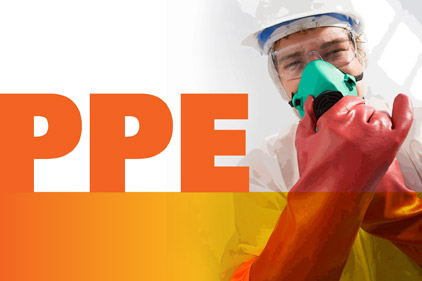Source: OSHA
See the requirements for change schedules.
Respirator cartridges don't last forever! A change schedule is the part of the written respirator program which says how often cartridges should be replaced and what information was relied upon to make this judgment. A cartridge's useful service life is how long it provides adequate protection from harmful chemicals in the air. The service life of a cartridge depends upon many factors, including environmental conditions, breathing rate, cartridge filtering capacity, and the amount of contaminants in the air. It is suggested that employers apply a safety factor to the service life estimate to assure that the change schedule is a conservative estimate. If you know what the chemical is and how much of it you are exposed to, then you are ready to estimate out how long your respirator cartridges will work and apply the safety factor.
3 valid ways for you to estimate a cartridge's service life
1. Conduct Experimental Tests
- Can save money by providing a more accurate service life value instead of relying on conservative assumptions made by other methods
- Most reliable method, especially for multiple contaminants
- Can be used to validate an existing change schedule
- Will likely take time and money to perform the tests
2. Use the Manufacturer's Recommendation
- Can result in a more accurate estimate for your particular brand of respirator
- Relies on the manufacturer's broad knowledge and expertise
- May not be possible if the manufacturer is unable to provide a recommendation
- May not account for all workplace and user factors adequately
3. Use a Math Model
- Inexpensive and takes little time
- Requires no math calculations if you use the Advisor Genius
- Not as accurate as experimental testing. May result in a service life estimate that is shorter than it needs to be due to conservative assumptions
- Generally limited to single contaminant situations
Keep In Mind
- You may not rely on odor thresholds and other warning properties as the primary basis for determining the service life of gas and vapor cartridges and canisters.
- You should account for environmental and user factors and use a conservative approach when evaluating service life testing data.
- You should apply a safety factor to any estimate to account for uncertainty.
- Mixtures, intermittent use and concentrations, storage practices and other variables may require the use of an administrative time limit, e.g. one day, even though the estimated life would be longer.
- An example of a decision logic tree which could be used when evaluating a workplace for use of air purifying respirators is presented in these pages.
- There is a published "Rule of Thumb" that may provide a rough estimation of cartridge service life. However, you should NOT use this as the sole method of determining service life.


